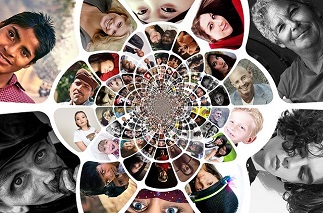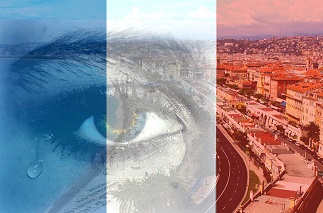Posts

Patterns and Actors of Disinformation: Analysis of Debunked Hoaxes in Spain in 2022
This research examines the patterns followed by disinformation in Spain through the fact-checking activities of Maldita.es, the leading fact-checking organization in Spain. We sought to answer three research questions: 1. What are the predominant topics of the hoaxes debunked by Maldita.es? 2. Who is responsible for the creation and dissemination of these hoaxes? and 3. In what formats and platforms are these hoaxes generally distributed? For this purpose, we conducted a quantitative content analysis of 729 hoaxes fact-checked in 2022 by Maldito Bulo. 40.7% of the debunked hoaxes were related to social issues, while 37.2% focused on political affairs. Regarding those responsible for the creation and dissemination, most of the hoaxes came from unidentified sources, although when the identity is known, the most frequent contributors are social media accounts, alternative and partisan pseudo-media, and journalists. These results explore the general disinformation scenario in Spain, using fact-checking as an approximation and discussing its implications.

From the Immediacy of the Cybermedia to the Need for Slow Journalism: Experiences from Ibero-America
The pressure of immediacy, the dictatorship of the click, and the growing avalanche of fake news have impacted journalism. Citizens are particularly skeptical about the information they receive from the press, especially in the digital media. Journalism is faced with the need – or almost the urgency – to rethink, reinvent and redefine messages, routines, and processes. In this regard, various initiatives, especially in Ibero-America, have opted for slow journalism as a reaction and response to information devaluation. The commitment to journalism that appreciates context and cares for narrative has driven this "slow" news trend that believes in "author journalism" and stories' humanization. Through the methodology of the case study, of a qualitative and exploratory nature, 12 experiences of "slow journalism" media in Ibero-America are reviewed, with a particular interest in their themes, contents, aesthetics, and sources of financing. It is concluded that these media are one of the few that carry out investigative journalism, although to subsist, they depend to a great extent on international cooperation agencies since their contents and aesthetics are elitist in comparison with their conventional digital peers, which reduces their capacity of maintenance by subscriptions and advertising.

Alcohol and Betting Radio Advertising in Spain. A Comparative Analysis of the Minor’s Protection Time Slot from a Media Responsibility Perspective
This article studies the process of demonization, its consequences, and how social media contribute to the formalization of its axiology. The demonization of societies aims to create social subjects that fit into the idea of the “other” by exposing them to compulsory invisibility. This research’s main objective was to examine how demonization is used as a weapon of oppression to devalue specific individuals through the hashtag #StopIslam and Instagram’s role in this process. The methodology used for this purpose has consisted of an empirical and quantitative analysis of the most recent (1 January 2020–31 July 2020) posts on Instagram with #StopIslam, analyzing the images and the content. The study has determined how, through social media manipulation, erroneous ideas are transmitted that prevent the Islamic collective’s integration, especially in European countries. The conclusions will reflect hate speech and how the Islamic world’s demonization results in the Muslim community’s stigmatization, racism, and Islamophobia. Although there are different articles related to demonization and hate speech, there are not many scientific resources that explain these variables on Instagram and how it affects the inclusion of the Muslim community in Europe, significantly when the time spent on the Internet is growing.

The Demonization of Islam through Social Media: A Case Study of #Stopislam in Instagram
This article studies the process of demonization, its consequences, and how social media contribute to the formalization of its axiology. The demonization of societies aims to create social subjects that fit into the idea of the “other” by exposing them to compulsory invisibility. This research’s main objective was to examine how demonization is used as a weapon of oppression to devalue specific individuals through the hashtag #StopIslam and Instagram’s role in this process. The methodology used for this purpose has consisted of an empirical and quantitative analysis of the most recent (1 January 2020–31 July 2020) posts on Instagram with #StopIslam, analyzing the images and the content. The study has determined how, through social media manipulation, erroneous ideas are transmitted that prevent the Islamic collective’s integration, especially in European countries. The conclusions will reflect hate speech and how the Islamic world’s demonization results in the Muslim community’s stigmatization, racism, and Islamophobia. Although there are different articles related to demonization and hate speech, there are not many scientific resources that explain these variables on Instagram and how it affects the inclusion of the Muslim community in Europe, significantly when the time spent on the Internet is growing.

Learning Leaders: Teachers or Youtubers? Participatory Culture and STEM Competencies in Italian Secondary School Students
Youth is increasingly learning in non-conventional contexts, such as social networks or video platforms, courses, and tutorials. This research aims to diagnose the role of participatory culture, digital resources, social networks, and, specifically, YouTube, in learning processes and the acquisition of Science, Technology, Engineering, and Mathematics (STEM) skills, specifically in mathematics, also analyzing the role of youtubers and, in contrast, teachers, both learning leaders in the formation of these skills. In order to accomplish this, mixed methods (quantitative and qualitative) were used, based on a survey applied to 4845 Italian adolescents, as well as a content analysis of the videos and YouTube channel of the Italian educational influencer Elia Bombardelli, one of the most followed and best rated in this country. Also, an in-depth interview has been applied to 12 Italian secondary school teachers. Among the main findings, it is highlighted that all adolescents value YouTube videos as a key resource to improve their school performance, rating youtubers better than teachers. However, it is remarkable that in the processes of learning and acquisition of STEM competencies, they prefer to interact with teachers rather than with youtubers.

Information Quality in Latin American Digital Native Media: Analysis Based on Structured Dimensions and Indicators
The current communicative ecosystem has profoundly transformed journalistic work and the media, generating with great eagerness the emergence of digital native media that do not follow the logic of their conventional peers. Although the advent of these media is not entirely negative, as they create multiple voices that contribute to pluralism, their quality has undoubtedly been questioned on several academic fronts. This work analyzes the most important Latin American digital native media by number of accesses (traffic), using a taxonomy of evaluation of dimensions of the informative quality, in which aspects such as informative sources, uses of international news agencies, correction of contents and factuality levels, ideological plurality in their opinion contents, among others, are taken into consideration. Of the emerging results, the ‘use of statistical indicators’ was the least rated (32.5%), mainly due to a lack of data journalism in the media studied. It is also worth noting that the indicator ‘comments and monitoring’ obtained the second-lowest rating, indicating an absence of conversation between the media and its audience through the comments section of each content.

Otherness as a form of intersubjective social exclusion: Conceptual discussion from the current communicative scenario
This study aims to review the theory based on «otherness» as a form of social exclusion and symbolic violence from the constructions of realities of the media, with particular emphasis on the ethics and aesthetics of language and its role in materializing identity differences. A search for specific criteria and boolean algorithms is carried out in Web of Science and Scopus on «otherness» [AND] «social exclusion», to then submit the emerging results to a co-occurrence matrix by citations with VOSViewer v. 1.6.13. From the relation tree of the most cited documents [min = 7] of the downloaded articles, a critical/analytical reading is made. «Otherness» is reviewed to a greater extent from a Western perspective, and more specifically, from a Eurocentric one. This implies that the study of «otherness» is not sufficiently analyzed by Asian or African authors, who are excluded from the analysis. In this sense, «otherness» is understood as a theoretical construct and as any symbolic construction of the other (phenotypically, but also in ideology, values and customs), but which carries a load of stereotypes that can become polarization, demonization, ergo and violence. Revisiting «otherness» as an informative construct becomes imperative in light of the emergence of extremist groups and xenophobic parties, as well as separatist policies such as Brexit or the Catalan split in Spain. Few articles contribute to elaborating a complete conceptual construct on «otherness» as an epistemological category of communication and information, so this research effort attempts to compile its theoretical discussion.

The Irresponsible Self-Regulation of Media in Spain: High-Grade Alcoholic Beverage Advertising in Sports Radio Programmes
Media must behave ethically towards their audiences since the latter play a fundamental role in shaping reality and public opinion. In this sense, the conduct of all media must be based on social responsibility, with ethical values and in compliance with laws and regulations. The present study analyses the presence of advertising for high-alcoholic-content beverages in sports programs through mentions by the host radio stations or collaborators, taking into consideration that the European directive, as well as Spanish legislation, prohibits the broadcasting of this type of advertising through audio-visual media (television and radio) channels, particularly in sports programs. To this purpose, three stations have been selected for analysis (COPE, Cadena Ser and Onda Cero) according to their daily audience numbers as reported by the General Media Study (a total of 9,000,000 daily listeners). The study was carried out between January and December 2017. A total of 355 mentions of high-alcoholic-content beverages were found, being the figure of the host radio the one that made more this type of advertising. Likewise, this research shows that most mentions of alcoholic beverages occurred in the afternoon (16:00–19:59), with rum (55.8%) and herb liqueurs (36.6%) being the most frequently advertised. It is also important to note that COPE, a radio station that has been sanctioned by the Spanish CNMV for this type of advertising, is precisely the radio station that has the highest frequency of alcoholic beverage advertising in this study (91.8%), which is evidence of the failure of the media self-regulation system in Spain.

Construction of War Discourse on International News Agencies: Case Study Terrorist attacks November 13th 2015
This study analyzes warmongering rhetoric presented by international agencies Reuters, Al Arabiya, Al Jazeera and Associated Press (AP) of the information related to the terrorist attacks in Paris on November 13th, 2015 for 15 days after the event. We have started from a quantitative and qualitative analysis of 550 information units using the software MAXQDA (v. 11.0.11). Subsequently, the semantic criteria of media discourse: functionality, significance and direction of the goal was applied on the selected sample. The results demonstrate the prevailing demonization of Islam, the exaltation of fear and panic in the discursive construction and it highlighted the spectacle of the information as a communicative strategy on the rhetorical guidance.

Dimensions and Indicators of the Information Quality in Digital Media
The current information ecosystem, crossed by a logic mediamorphosis, is increasingly generating the emergence of digital media and information portals that do not follow the formal publishing procedures of conventional media. The crisis of traditional media has also changed the way we become informed. However, information quality remains a factor for discussion in the absence of unified criteria for analysis. In this regard, the question arises: how do we evaluate and assess the quality of information in digital media? This study aims to seek agreement between academics and media professionals on the areas and dimensions of information quality of digital media according to objective or quantifiable values. For this, a taxonomy of the dimensions related to information quality was created, based on the review of scientific literature and further evaluated and validated by 40 experts, including scholars and media professionals alike, who focused on verifying the classification´s reliability. As a result, three macro areas of information quality, containing 21 areas, inherently comprised of a total of 75 dimensions, were validated. Lastly, this study proposes a structured model that will allow for the analysis of information quality of digital media, both in its pre-information phase catalogued in the media-business and on the media-workers’ socio-occupational characteristics, as well as its final product and informational content.
